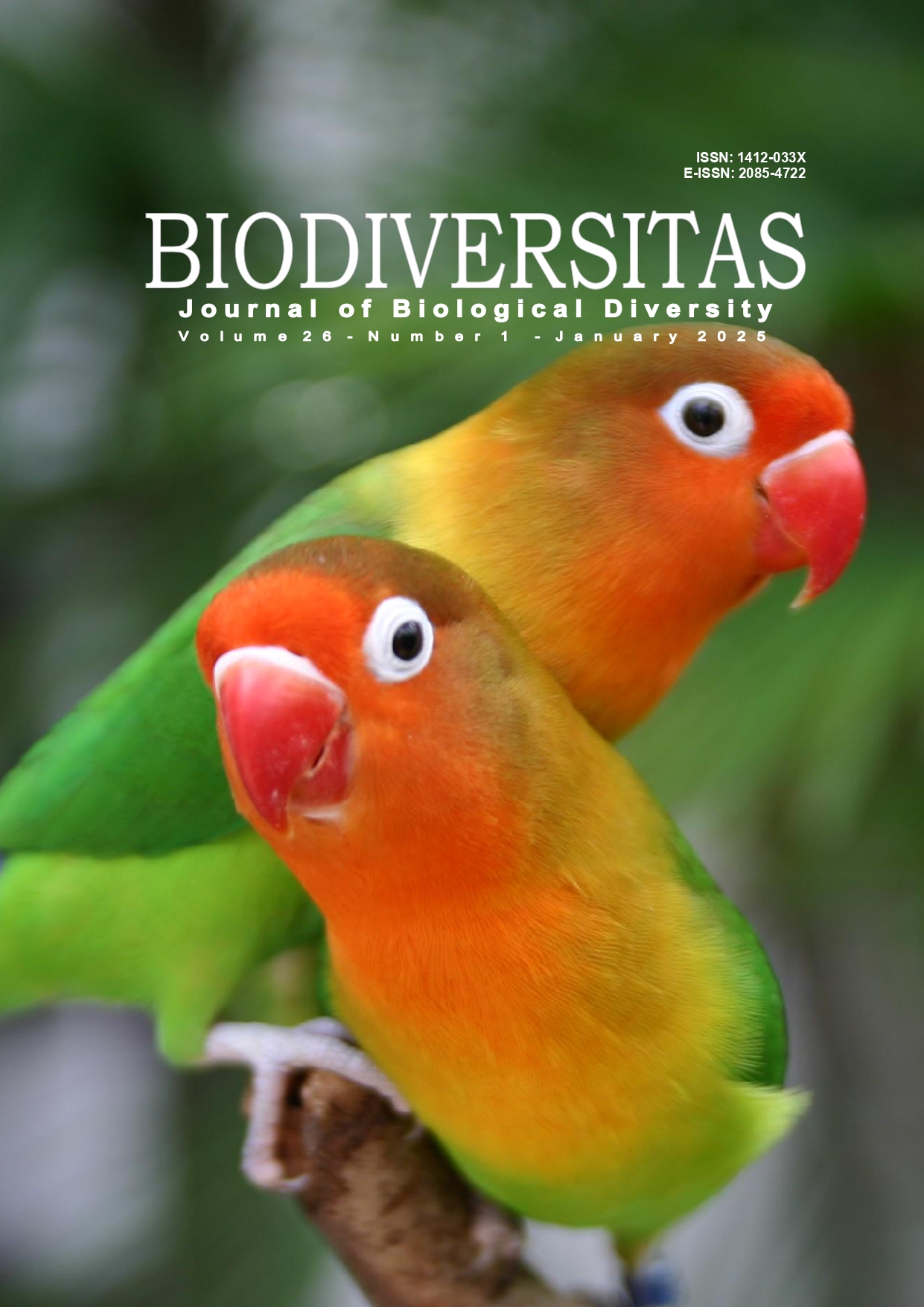Comprehensive assessment of Terebralia palustris populations in the Sayeung Calang River ecosystem, Aceh Jaya, Indonesia
##plugins.themes.bootstrap3.article.main##
Abstract
Abstract. Isma MF, Prayitno SB, Haeruddin, Muskananfola MR. 2025. Comprehensive assessment of Terebralia palustris populations in the Sayeung Calang River ecosystem. Biodiversitas 26: 62-72. Terebralia palustris (Linnaeus, 1767) a mangrove-dwelling gastropod, has a vast Indo-Pacific distribution spanning over 10,000 kilometers across diverse ecoregions. This study aimed to analyze population ecology and health conditions of T. palustris. Samples were collected from three sections of the Sayeung Calang River, Indonesia, using a 50 m line transect with 10 × 10 m plots and 1 × 1 m subplots. Density showed no significant variation (p > 0.05) with even distribution (<1). SL and SW morphometrics differed significantly (p < 0.05). Other morphometrics (SP, BWL, AW, AL, BW) showed no significant variation. The highest morphometric variation coefficient exceeded 40% (AW/SL). ST1 - ST2 and ST3 differentiation was primarily driven by SW/SL (34.31%), while ST1-ST4 and ST2 and ST3-ST4 differentiation was primarily driven by BW/SL (38.52 and 39.17%, respectively). PCA analysis identified SW/SL and SP/SL as the main morphometric characters (r = 0.44). Discriminant analysis indicated that AW/SL, AL/SL, SP/SL, and BWL/SL were most differentiated between sections. T. palustris exhibited an unimodal age distribution, suggesting disrupted health and severe competition, resulting in low adaptation (diversity coefficient: 20.44-38.04%). In conclusion, T. palustris in the area demonstrates distinct morphometric adaptations and distribution patterns, likely influenced by environmental conditions. Limited growth and adaptation capacity may result from intraspecific competition and habitat variability.

